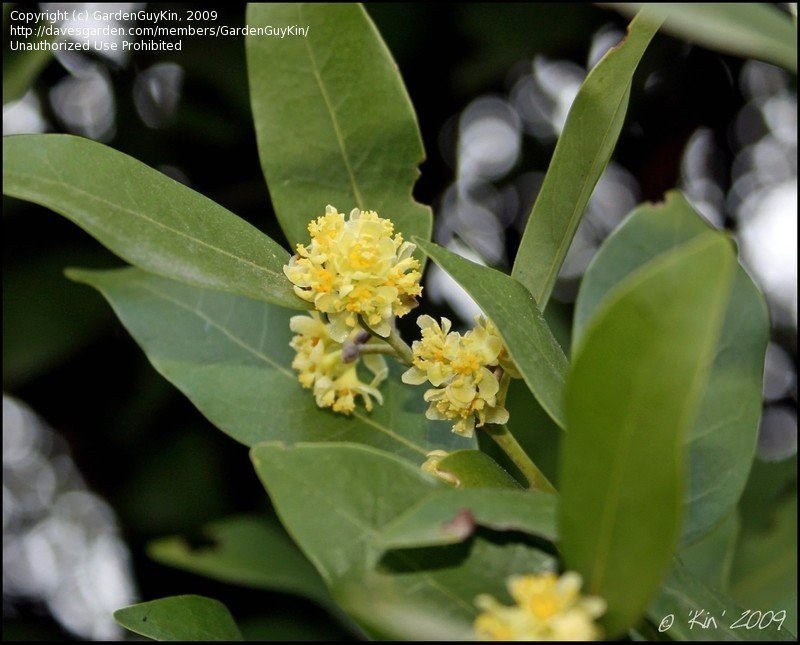Umbellularia californica
(Umbellularia californica)

Description
Umbellularia californica is a large hardwood tree native to coastal forests and the Sierra foothills of California, and to coastal forests extending into Oregon. It is endemic to the California Floristic Province. It is the sole species in the genus Umbellularia. The tree was formerly known as Oreodaphne californica. In Yuki, it is called pōl’-cum ōl In Oregon, this tree is known as Oregon myrtle, while in California it is called California bay laurel, which may be shortened to California bay or California laurel. It has also been called pepperwood, spicebush, cinnamon bush, peppernut tree, headache tree, mountain laurel, and balm of heaven. It is an evergreen tree growing to 30 metres (98 feet) tall with a trunk up to 90 centimetres (35 inches) thick. The largest recorded tree is in Mendocino County, California, and measured (as of 1997) 33 m (108 ft) in height with a 36 m (119 ft) spread. The thin bark is smooth and gray-brown when young, later turning reddish brown and scaly. The fragrant leaves are smooth-edged and lance-shaped, 3–15 cm long and around a third as wide,similar to the related bay laurel, though usually narrower, and without the crinkled margin of that species. The leaves are green, and lighter on the underside. The bark and leaves have a pungent scent resembling camphor when bruised, due to a chemical known as umbellulone. The leaves are entire and lance-shaped about 3–10 centimetres (1.2–3.9 in) long. They may substitute for the Mediterranean bay leaf in cooking. The flowers are small, yellow or yellowish-green, produced in small umbels (hence the scientific name Umbellularia, "little umbel"). Unlike other "bay laurels" of the genus Laurus, Umbellularia has perfect flowers (male and female parts in the same flower). The fruit, also known as "California bay nut", is a round and green berry 2–2.5 cm long and 2 cm broad, lightly spotted with yellow, maturing purple. Under the thin, leathery skin, it consists of an oily, fleshy covering over a single hard, thin-shelled pit, and resembles a miniature avocado. Umbellularia is in fact closely related to the avocado's genus Persea, within the family Lauraceae.The fruit ripens around October–November in the native range.
Taxonomic tree:







